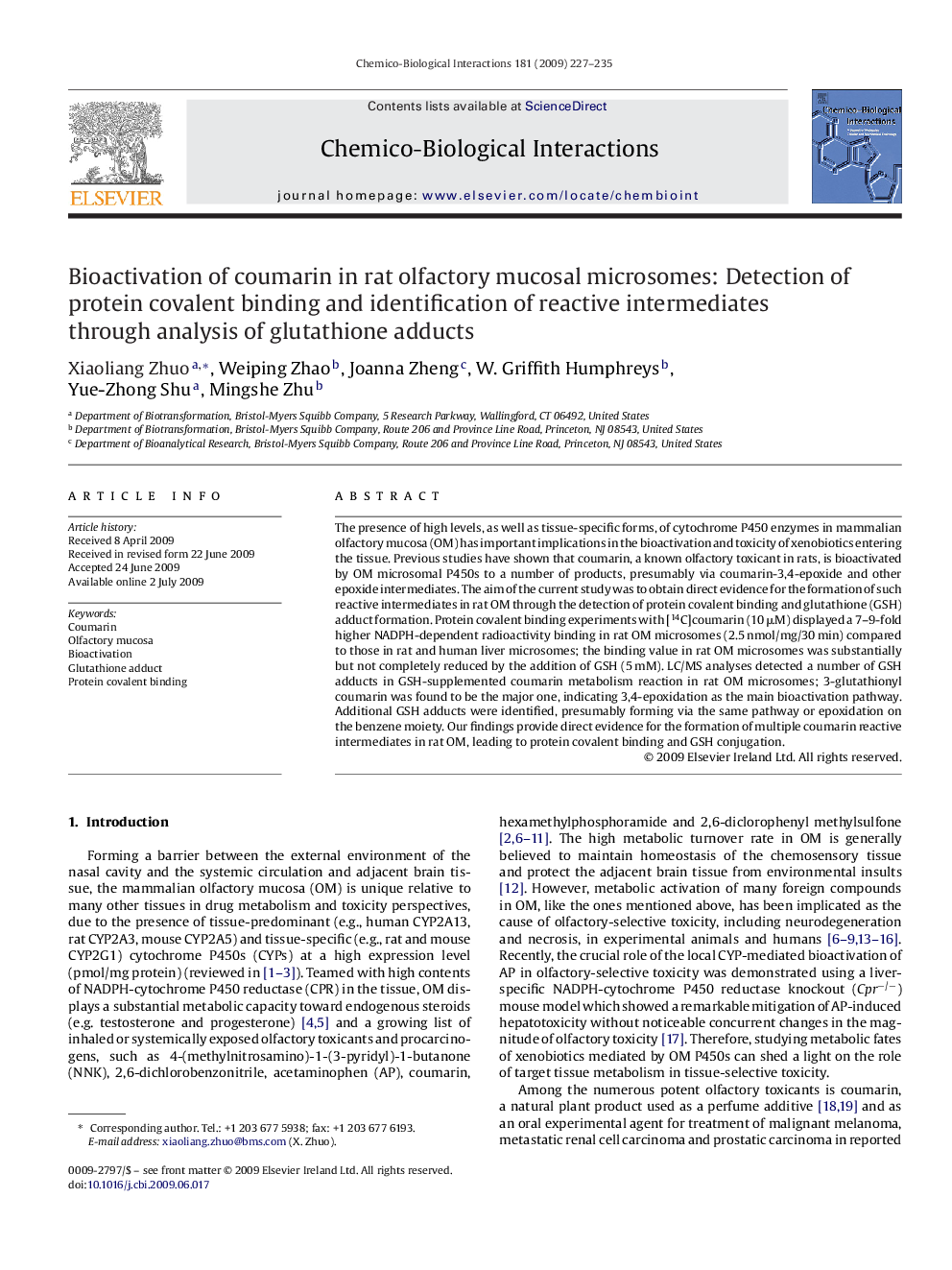| Article ID | Journal | Published Year | Pages | File Type |
|---|---|---|---|---|
| 2581289 | Chemico-Biological Interactions | 2009 | 9 Pages |
The presence of high levels, as well as tissue-specific forms, of cytochrome P450 enzymes in mammalian olfactory mucosa (OM) has important implications in the bioactivation and toxicity of xenobiotics entering the tissue. Previous studies have shown that coumarin, a known olfactory toxicant in rats, is bioactivated by OM microsomal P450s to a number of products, presumably via coumarin-3,4-epoxide and other epoxide intermediates. The aim of the current study was to obtain direct evidence for the formation of such reactive intermediates in rat OM through the detection of protein covalent binding and glutathione (GSH) adduct formation. Protein covalent binding experiments with [14C]coumarin (10 μM) displayed a 7–9-fold higher NADPH-dependent radioactivity binding in rat OM microsomes (2.5 nmol/mg/30 min) compared to those in rat and human liver microsomes; the binding value in rat OM microsomes was substantially but not completely reduced by the addition of GSH (5 mM). LC/MS analyses detected a number of GSH adducts in GSH-supplemented coumarin metabolism reaction in rat OM microsomes; 3-glutathionyl coumarin was found to be the major one, indicating 3,4-epoxidation as the main bioactivation pathway. Additional GSH adducts were identified, presumably forming via the same pathway or epoxidation on the benzene moiety. Our findings provide direct evidence for the formation of multiple coumarin reactive intermediates in rat OM, leading to protein covalent binding and GSH conjugation.
